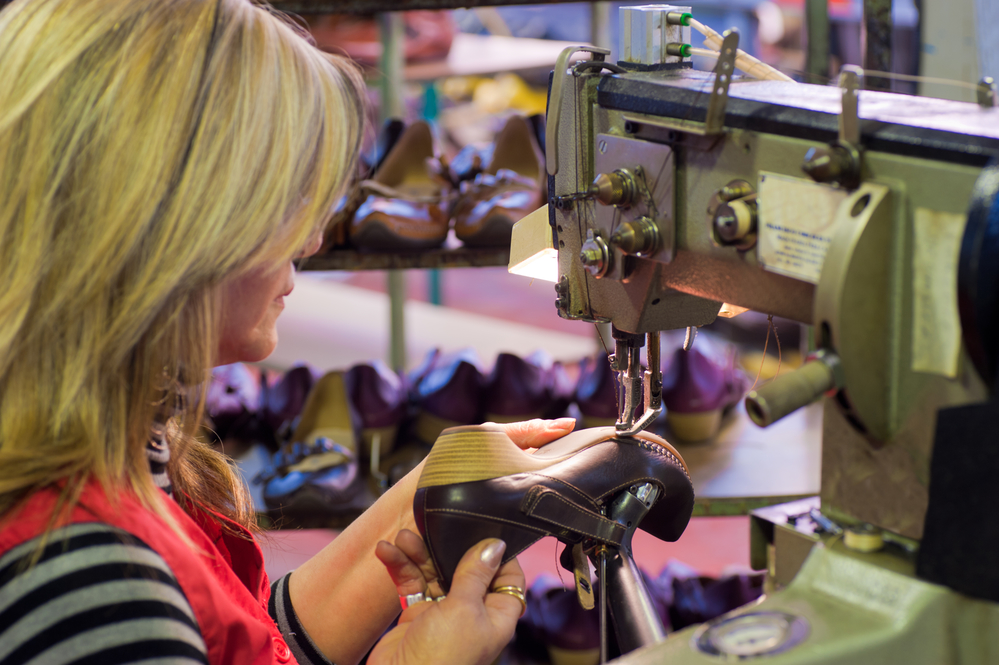
I share with you the interview of María Bertero – Modaes – Dossier: “Latin America, the future for fashion”.
As always, it is a great pleasure to collaborate with the most important publication in the Spanish textile and fashion sector. Thank you for the opportunity María!
“Nearshoring is the great opportunity for Latin America” By María Bertero  Por María Bertero
Por María Bertero
Based in Asia for more than a decade, Gabriel Farías is a supply expert with experience in international and Latin American companies. The Argentinean professional emphasizes with optimism the opportunity that Latin America has to promote its textile industry, leaning on nearshoring for the region.
What are the strengths and weaknesses of textile supply in Latin America?
Its main advantage is the experience in the sector. There are countries like Peru, Mexico or Colombia that have a long history. There is technical knowledge and specialized people to generate products of good quality and according to international standards. Compared to Asia, the cost of labor would be a weakness, as well as the rising cost of transportation. The great opportunity is for Latin America to work for the region; that would be a very competitive advantage considering the importance of speed today. What the industry needs to do now is to add value.
A recurring issue is legal uncertainty, does it frighten companies?
Of course. It is one of the problems that the region should address first in order to achieve progress and growth. It is necessary to establish clear rules of the game in order to attract investment and make the textile industry of each country competitive. Nobody invests in a country in which they cannot reap profits; it is clear and evident that this point has conditioned the sector in Latin America with advances and setbacks.
Could the domestic fashion market in Latin America be larger? What is required to make it possible?
Of course. It is one of the problems that the region should address first in order to achieve progress and growth. It is necessary to establish clear rules of the game in order to attract investment and make the textile industry of each country competitive. Nobody invests in a country in which they cannot reap profits; it is clear and evident that this point has conditioned the sector in Latin America with advances and setbacks.
Applying clear rules of the game.
Farías insists that the countries of the region, supported by governments and private entities of the sector, must have more stability to attract new investors and boost their growth.
 Is the tariff system a problem for the creation of a more important Latin American market?
Is the tariff system a problem for the creation of a more important Latin American market?
Before investing, international companies analyze country by country, since the differences are very large for each market in terms of customs and taxes. The region has potential as long as we think of a textile industry that will not only meet the country’s domestic demand, but that produces for all of Latin America and that can cover the entire value chain.
Is the textile industry in Latin America obsolete?
No, but it needs updating, which comes hand in hand with investment. In some countries, the textile industry has been in subsistence, but today it can respond to the new needs of the fashion industry. It is necessary to add value to products or services.
¿ How many years behind Asia, Europe and the United States is it?
In fact, each country has to respond to its natural conditioning. Evidently, if we compare Latin America with Europe, the industry in every sense, beyond manufacturing, is lagging behind. But there are signs that the industry can catch up with innovation around the world. The sector needs new ideas and young people who can lead the way to bring what is seen in Europe and Asia to Latin America. Morocco managed to do it in Africa and now it is a production hub.
¿ To what extent can Latin American industry be innovative? Is there something in which it has been a pioneer?
Today, innovation also involves applying what has already resulted in other countries in the world.
It is no longer frowned upon to copy others; you don’t have to want to be the first to invent something. If I were a Latin American supplier, I would travel to try to copy the systems that already work because fashion is globalized, we don’t have to do anything extraordinary. Maybe something new can be invented, but innovation is also in front of those who invest the most and where quality education can be found. The key is to see what fashion demands and replicate what works in other countries through clear rules of the game where investment is encouraged.
Is it possible to manufacture for Europe?
The main problem is transport and not only because of the geographical location of Latin America, but also because of the frequency of departing ships, which makes logistics more expensive. The frequency of shipping routes between Asia and Europe is much higher, being speed-to market so important today. There are countries that can be competitive abroad if they focus on niches, for example Peru with pima cotton or alpaca.

Is specialization an option to compete in the global market?
One of the most important opportunities that Latin America has now is to produce fast to supply the region according to the new digital client. Ecommerce brands in Europe are producing in the region precisely to respond to the timeframe demanded by their Latin American customers. In addition, they can specialize in certain materials, as in the case of Peru.
What is the business universe of producers in Latin America like? Is it an optimal structure?
In most countries the manufacturers are small and medium sized companies, many of them with a family structure. The industry is very fragmented, but that can be an advantage because with these formats they are more flexible and better adapted to the ups and downs of the region’s economies.
In the long term, is public intervention an advantage or a hindrance to the development of the textile industry?
I am not in favour of the industry having to be subsidised, because that will destroy it. We have to target the industries that have potential in each country and what they cannot produce, buy it abroad. In the long term it could not be maintained. A different matter is public intervention in terms of aid, credit schemes, generating clear rules of the game, because otherwise competitiveness is not generated.
What three pieces of news would help the textile industry take off in Latin America?
One piece of news, and I believe the only and most important, would be that of a free common market for the region, a kind of European Union. Because that would mean that countries have social, political and economic stability.
And if the textile industry disappears in Latin America, would it be a tragedy?
Yes, it is the livelihood of many families. Countries need to clarify their situation and figure out how they can be competitive. If any of them see that in textile matters they cannot be competitive, then it would not be a drama if itd isappeared.
In 2030, will Latin America be a productive hub?
My wish is that it will be. It already is, but we would all like it to be much more important for the rest of the world. I insist, the tendency is to produce close to the commercialization markets and all the conditions in terms of technology and innovation are being created to keep it that way. The near future lies in the commercialization of the product in which the clients will give the order of production of the garments and those machines that respond to the order will be very close to the purchase process.
You can download the Dossier: “Latin America, the future for fashion” here: Modaes.es y Modaes Latinoamérica











































